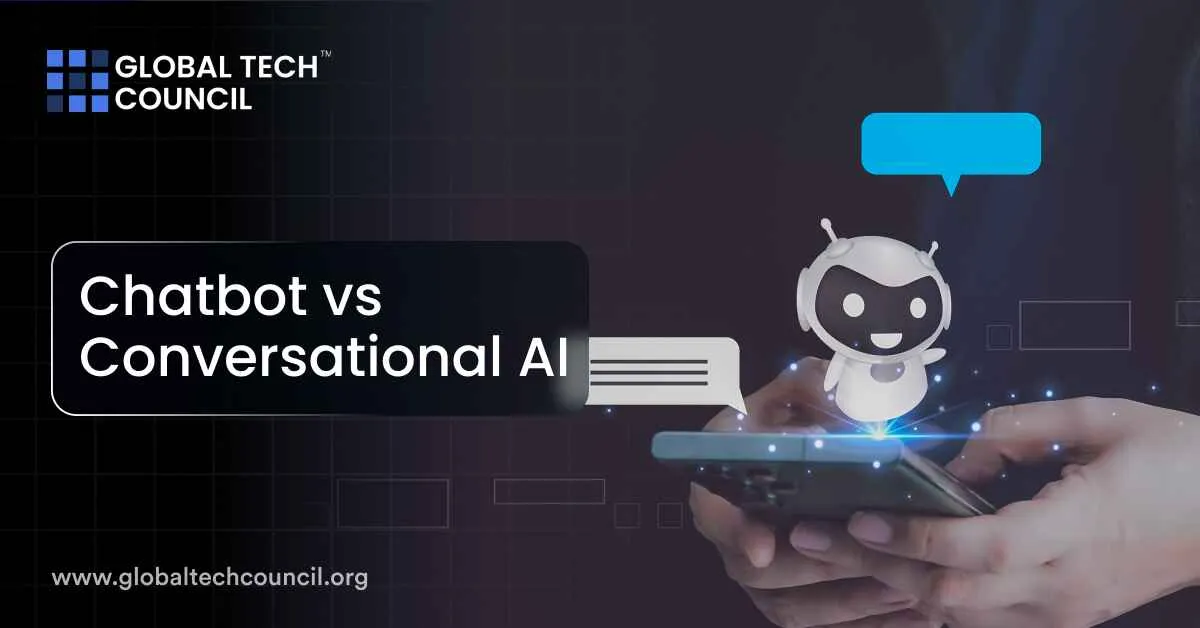Chatbots and conversational AI have become valuable resources for businesses, especially in customer service, daily operations, and automation. Though people sometimes confuse the two, they actually have different roles and abilities.
What Are Chatbots?
A chatbot is a software program made to have conversations with users based on specific rules. It operates by following a structured set of guidelines, often responding to certain keywords or phrases entered by the user. If someone asks, “When does your store close?” the chatbot will detect the keyword and deliver the correct answer.
Businesses use chatbots for tasks like answering frequently asked questions (FAQs) or guiding customers through simple processes. These systems work well for straightforward tasks but struggle when asked something that doesn’t fit their pre-defined instructions. A good example is small businesses using simple chatbots for tasks like checking orders or making appointments.
Types of Chatbots
- Rule-Based Chatbots: These follow specific guidelines. They follow a specific decision path based on user input, which makes them suitable for predictable tasks, such as providing answers to common questions.
- AI-Enhanced Chatbots: These are more advanced than rule-based bots, as they incorporate some basic artificial intelligence features. They can understand user intent better, although their abilities are still more limited compared to full conversational AI systems.
What is Conversational AI?
Conversational AI is a more advanced system that includes technologies like AI chatbots and virtual assistants. They do more than just identify keywords, utilizing advanced techniques such as natural language processing (NLP) and machine learning (ML) to hold more natural conversations.
Unlike basic chatbots, conversational AI can grasp the meaning behind questions, even if they are asked in various ways. It remembers past conversations, adapts to various situations, and gives customized responses. These systems are highly capable of handling more complex inquiries and offer a more engaging, human-like experience.
A great example is voice assistants like Siri or Alexa. These systems don’t just respond to written questions—they understand voice commands and perform a variety of tasks, from personal assistance to managing customer service needs.
Key Differences Between Chatbots and Conversational AI
Functionality and Scope
Chatbots are mostly designed for straightforward, repetitive tasks based on pre-set rules. They work well for answering common customer inquiries, like navigating a product catalog or managing frequently asked questions.
Conversational AI, however, can manage more advanced interactions. It understands the context, can process varied inputs, and supports more fluid discussions. Its flexibility allows it to address complex problems, such as troubleshooting issues or making personalized recommendations.
Learning and Adaptation
Rule-based chatbots are static—they don’t learn from past conversations. If you want to improve their performance, you have to update their responses manually. They often struggle with questions that don’t follow their preset patterns.
Conversational AI, on the other hand, learns continuously. The more it interacts with users, the better it gets at understanding their needs and preferences. This allows it to improve over time, without constant human input.
User Experience
Chatbots rely heavily on keywords to provide answers. While they work well for straightforward needs, users can get frustrated when asking questions outside the chatbot’s range of knowledge.
Conversational AI offers a much smoother experience. It can handle open-ended questions and provide more personalized responses, which leads to a better interaction for the user.
Integration and Channels
Chatbots are generally limited to text interactions, often appearing on websites or through social media platforms.
Conversational AI, in contrast, can engage with users across different platforms—whether through voice, text, apps, or even smart devices. This makes it a more versatile option for interacting with users.
Real-World Applications
Many companies have already started using conversational AI and chatbots in different ways.
- Ulta Beauty uses conversational AI to assist customers in checking order status and learning about promotions. The system recognizes user queries, even when phrased differently, providing a tailored experience.
- Dell uses conversational AI to help customers troubleshoot technical issues. Instead of giving scripted responses, the system understands complex problems and offers the appropriate solution or connects the user to a human for further help.
- On the simpler side, Grammarly’s chatbot uses a rule-based approach. It helps users with specific tasks like checking grammar or offering writing suggestions, working within set limits.
Practical Uses
Chatbots are great for automating routine tasks. For instance, they can schedule appointments, respond to FAQs, or guide users through shopping steps online. This makes them perfect for businesses that handle large volumes of repetitive inquiries.
Conversational AI, however, shines in more complex settings. It’s particularly useful in industries like banking, healthcare, and telecommunications, where customers need personalized assistance or where inquiries require context-based answers.
Choosing the Right Solution
When deciding whether to use a chatbot or conversational AI, you need to think about the complexity of the tasks involved. Chatbots work best for simple, repetitive interactions that don’t need much flexibility. They are also cheaper and simpler to set up.
Conversational AI is better suited for handling complex tasks that require understanding context and providing personalized responses. This makes it ideal for businesses focused on delivering high-quality customer service, such as those offering detailed recommendations or dealing with multi-step customer support processes.
Final Thoughts
Both chatbots and conversational a offer significant advantages. However, choosing between them depends on the complexity of the interactions your business needs to manage. Chatbots are great for handling routine queries, while conversational AI provides more flexibility for dealing with complex customer interactions. Together, these tools can complement each other, helping businesses manage both simple and more detailed conversations effectively.
